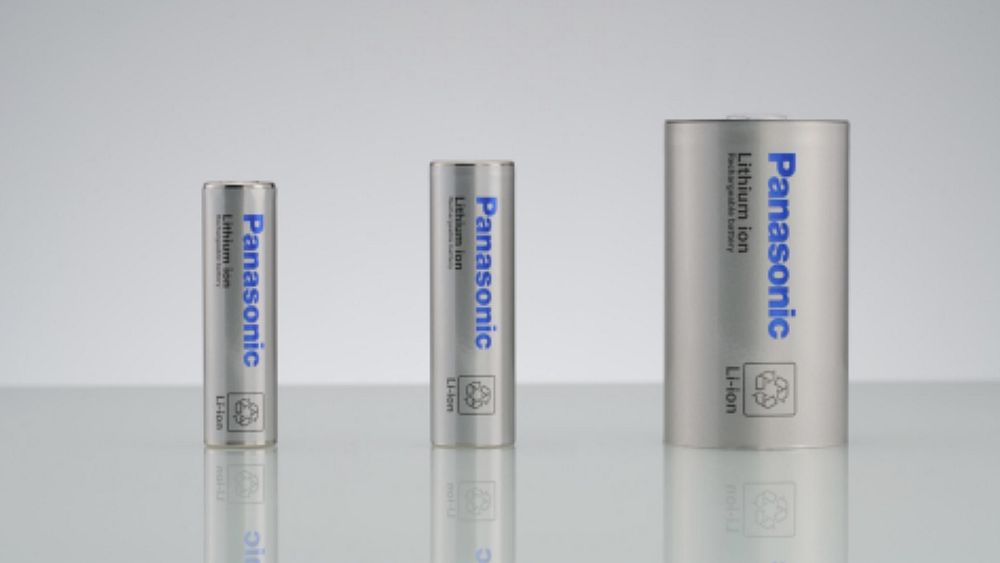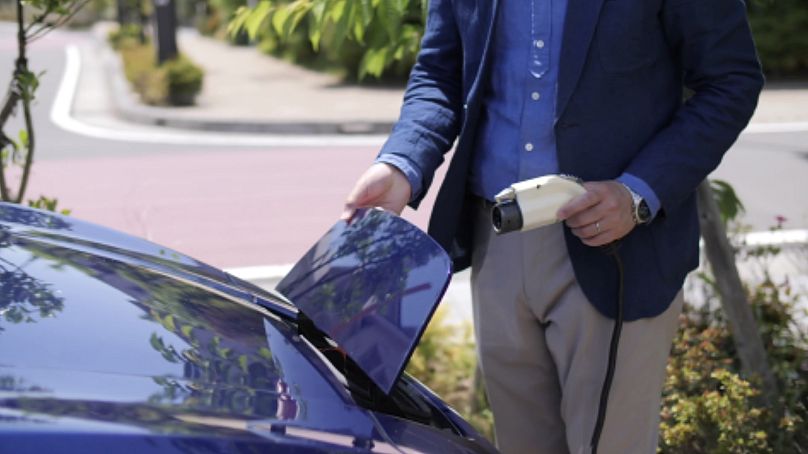
Panasonic Energy, a global leader in battery vehicle technology, is on track to quadruple current production levels of its high-capacity lithium-ion batteries by 2031 as the demand for battery electric vehicles (EVs) soars in markets around the world.
The company is establishing new supply chain partners near its major facilities in North America in order to secure the quality and quantity of materials needed for the scale up of production over the coming years.
Chief Technology Officer, Dr Shoichiro Watanabe said establishing a local ecosystem of suppliers and partners to support global growth as well as environmental ambitions — including halving its carbon footprint by 2031 — is key to success.
“As a global leader of lithium-ion batteries Panasonic Energy is targeting a reduction in its carbon footprint whilst simultaneously expanding the output of a highly technical product. This is a delicate but necessary balancing act because both goals – boosting production and lowering environmental impact — are so important,” Dr Watanabe said.
“The lithium-ion batteries are one of the solutions powering the rapid increase in clean energy vehicles and ensuring Panasonic Energy can meet that demand in a sustainable way requires a lot of innovation.”
EV adoption forecast exceeding estimates
Globally, the growth of EV sales continues to exceed forecasts. The International Energy Agency recently upgraded their estimates (from predictions made last year) to a further 20 per cent more EVs expected on roads by the end of the decade.
Europe and China are leading the transition with battery-powered vehicles making up nearly a quarter of overall sales in both Europe and China in August, according to Bloomberg. Plug-in hybrids, cars that combine a gasoline engine with an electric motor and a rechargeable battery, push EV car sales to 28 per cent in Europe.
Experts predict other major markets including the US and India will catch up as competition and advancements in technology improve the attractiveness of electric vehicles, making them economically comparable with fossil fuel cars in some markets and amongst some manufacturers.
However, overcoming global macroeconomic headwinds such as access to raw materials, rising energy costs as well as the transition to a green economy remains a huge challenge. A relentless focus on innovation to battery design and production is critical to keep the transition from fossil fuels cars to EVs on track, the company said.

Improving the volumetric energy density
Working on the energy density so batteries perform better is one way to help increase the attractiveness of EVs to consumers.
Panasonic engineers are working to increase the volumetric energy density of the lithium-ion batteries by five per cent by 2025 and to 25 per cent by 2030. Improving the energy density will mean battery packs need fewer cells and less materials which could reduce the overall price of an EV.
Secondly, improvements in energy density can potentially increase the driving range on a single charge because more energy can be stored in each battery. However, this is also largely influenced by the specifications and design of each EV manufacturer.
“As the battery technology improves and we learn how to produce it at scale and in more cost-effective ways, we believe this will help to drive adoption across markets around the world,” Dr Watanabe said.
Recycling materials to reduce reliance on rare metals
Another way to improve the attractiveness of EVs whilst also securing supply for mass production is to integrate recyclable components where possible. Finding alternatives to reduce the reliance on rare metals obviously has environmental benefits too.
In the United States, Panasonic has established processes to collect used batteries from consumer electronics with distribution partners which are then recycled with material recyclers and reused as materials for new batteries.
Recycling scrap materials at production facilities also helps to reduce disposability of materials and meet environmental goals. The company has established a partnership with Redwood Materials Inc, a sustainable battery materials manufacturer, which has been collecting and recycling scrap material from the Nevada factory since 2019.
Starting in 2025, Redwood will supply Panasonic Energy with recycled cathode active materials that will be used to make lithium-ion batteries in the company’s Kansas facility. Cathode is a key part of the battery cells and helps to increase battery energy density.
“The facility in Nevada is now one of the world’s largest lithium-ion battery factories, surpassing eight billion EV battery cells shipped since production began in 2017.
“Integrating recycling processes with local procurement partners will make production more efficient whilst boosting capacity.”
Local procurement: Securing low-carbon materials
To meet carbon footprint reduction goals, Panasonic Energy is working with selective partners who manufacture battery materials in a more sustainable manner.
One of those partners is the Canadian graphite company, Nouveau Monde Graphite, a company using renewable energy to produce graphite. Working with sustainable local suppliers minimises damage to the environment by scaling up renewable energy for mining and processing.
Building new factories, increasing production to boost annual EV battery capacity to 200 gigawatt hours by 2031 whilst halving carbon emissions can only be achieved with cutting-edge technology, new supply chain partners and a commitment to a cleaner automobile industry, said Dr Watanabe.
“The vision of a clean and strong global mobility industry is what drives our work ethic and ambition at Panasonic Energy.
“We have many goals and by working together with a focus on local production for local consumption, we can create the world we want to live in whilst also developing incredible innovation and technology.”
By Annabel Murphy
